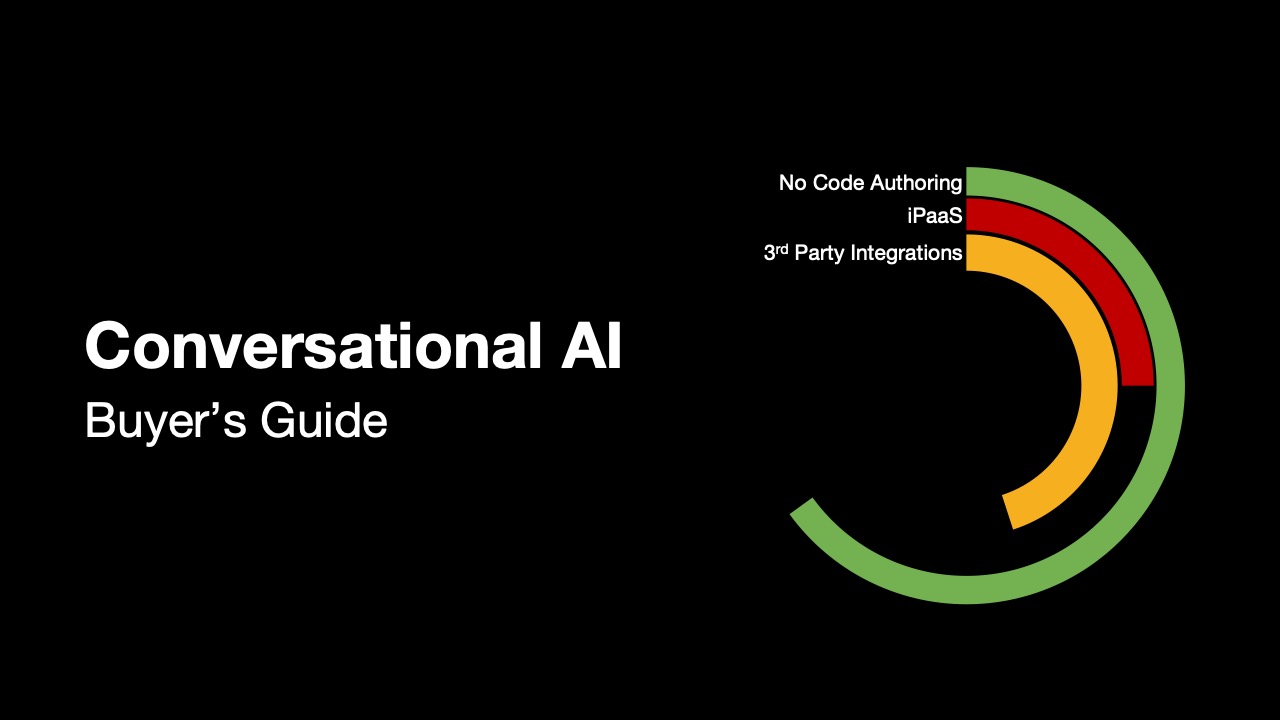When it comes to customer service teams, businesses are always looking for ways to provide the best possible experience for their customers. In recent years, conversational AI has become a popular option for many businesses.
But what is conversational AI? and how does it differ from chatbots? In this article, we will explore the differences between conversational AI and chatbots, and discuss which conversational interfaces might be right for your business.
What is a Bot?
A bot is a software application that is designed to automate certain tasks. Bots are often used to perform simple tasks, such as scheduling appointments or sending notifications. Bots are programs that can do things on their own, without needing specific instructions from people.
Bots can be used to do tasks that a human would have to do. This is helpful because bots are much faster than humans. However, bots can also be harmful and come in the form of malware.
Bots are software programs that automate routine tasks over the Internet. More than half of all Internet traffic is bots scanning material, engaging with websites, chatting with people, and seeking potential target sites. Some bots are beneficial, such as search engine bots that index information for search and customer support bots that assist customers.
Bots are tools designed to assist the user, by performing a variety of tasks. Many bots can be found on social networking sites, search engines, streaming platforms, news aggregators, and forums like Reddit. Bots can also spread malware or perform numerous other harmful activities.
What is a Chatbot?
Chatbots are designed to simulate human conversation. This means they can interpret the user’s input and respond in a way that makes sense. Chatbots are often used to provide customer support or perform simple tasks, such as scheduling appointments.
Chatbots are programmed to understand natural language. This means they can interpret the user’s input and respond in a way that makes sense. For example, if you ask a chatbot for the weather, it will understand your input and give you a response that includes the current temperature and forecast.
You’ve undoubtedly spoken with a chatbot whether you realize it or not. For instance, while researching a product at your computer, a pop-up appears on your screen asking if you require assistance. Perhaps you’re on your way to see a concert and use your smartphone to request a ride via chat.
You might have spoken to a chatbot and asked it where the nearest restroom was, or you may have used voice commands to order a coffee from your local café and been given an estimate of when your food would be ready and how much it would cost. These are all examples of circumstances in which you may run into a chatbot.
Conversational AI chatbots are more intelligent and use artificial intelligence (AI), automated rules, natural language processing (NLP), and machine learning (ML) to understand and respond to all types of requests.
What is Conversational AI?
Conversational artificial intelligence (CAI) refers to technologies that understand natural human language. They employ machine learning, natural language understanding, and massive amounts of data to simulate human interactions, interpreting speech and text inputs and conveying their meanings across various languages.
Conversational AI is a branch of AI that deals with the simulation of human conversation. This means it can interpret the user’s input and respond in a way that makes sense. Conversational AI is different from chatbots in that it goes beyond simple task automation. It aims to provide a more natural conversational experience, one that feels more like a conversation with a human.
Conversational AI can be used for customer support, scheduling appointments, sales, human resources help, and many other uses that improve customer and employee experiences. These technologies allow conversational AI to understand and respond to all types of requests and facilitate conversational flow. Advanced CAI can involve many different people in the same conversation to read and update systems from inside the conversation.
The Evolution of Chatbots and Conversational AI Solutions
Basic chatbots have been around for decades in one form or another. The first traditional chatbots were created in the 1960s. In 1966, ELIZA, a chatbot created by Joseph Weizenbaum, was released. ELIZA was designed to mimic human conversation and it became quite popular as a smart speaker, with some people even falling in love with it.
Cleverbot was ‘born’ in 1988, when Rollo Carpenter saw how to make his machine learn. Things you say to Cleverbot today may influence what it says to others in the future. The program chooses how to respond to you fuzzily, and contextually, the whole of your conversation being compared to the millions that have taken place before.
In 1997, ALICE, a conversational AI program created by Richard Wallace, was released. ALICE was designed to be more human-like than previous chatbots and it quickly became the most popular conversational AI program. ALICE is still used today in many customer service applications.
Microsoft’s conversational AI chatbot, Xiaoice, was first released in China in 2014. Since then, it has been used by millions of people and has become increasingly popular. Xiaoice can be used for customer service, scheduling appointments, human resources help, and many other uses.
Microsoft DialoGPT is a conversational AI chatbot that uses the power of artificial intelligence to help you have better conversations. It can understand and respond to natural language, and it gets smarter the more you use it.
DialogGPT can be used for a variety of tasks, including customer service, support, sales, and marketing. It can help you automate repetitive tasks, free up your time for more important things, and provide a more personal and human touch to your customer interactions.
Chatbots have come a long way and the best ones are now powered by AI, NLP, and machine learning. These technologies allow chatbots to understand and respond to all types of requests.
Conversational AI is the next step in the evolution of chatbots. It aims to provide a more natural conversational experience, one that feels more like a conversation with a human.
Difference Between Chatbot vs. Conversational AI
The main difference between chatbots and conversational AI is that conversational AI goes beyond simple task automation. It aims to provide a more natural conversational experience, one that feels more like a conversation with a human.
Chatbots are computer programs that imitate human exchanges to provide better experiences for clients. Some work according to pre-determined conversation patterns, while others employ AI and NLP to comprehend user queries and offer automated answers in real-time. But it’s important to understand that not all chatbots are powered by conversational AI.
Conversational AI refers to a type of artificial intelligence. Conversational AI platforms employ data, machine learning (ML), and natural language processing technologies to recognize vocal and text inputs, mimic human interactions, and improve conversation flow. Because CAI goes far beyond a conventional chatbot and ultimately sets the new standard for the customer experience.
Chatbot Pros and Cons
While there are benefits to using chatbots, there are also some drawbacks to consider.
Chatbots can be repetitive
Chatbots can be repetitive and sometimes feel like they are giving you the runaround. Chatbots can be hard to understand, especially if they are not powered by conversational AI. If you need help with a complex issue, a chatbot may not be able to provide the level of support you need.
Chatbots can often give inaccurate information
If a chatbot is not powered by conversational AI, it may not be able to understand your question or provide accurate information. This can be frustrating and cause you to waste time.
Chatbots can’t answer complex questions
Complex questions that need serious analysis or take several steps to complete are typically too difficult for chatbots. If a bot attempts to answer questions around a broad use case it may provide an unsatisfactory user experience.
Integrating chatbots into multiple systems is difficult
Complex answers for most enterprise use cases require integrating a chatbot into two or more systems. Doing so requires significant software development effort in order to provide your users with a contextual answer. If you find bot projects are in the same backlog in your SDLC cycles, you may find the project too expensive and unresponsive.
Chatbots lack the necessary enterprise security features
In today’s age of data sensitivity and privacy, customers and enterprise security officers must trust the bots containing private data to comply with laws and mandates. Chatbots also lack auditing features required to meet compliance mandates. If there is ever an issue, you have to ask your IT development and operations departments to review terabytes of log data.
Chatbot vs Conversational AI Examples
Chatbots can be a great asset for small businesses. They can help take care of customer service tasks, such as answering frequently asked questions and providing information about products and services. They are normally integrated with a knowledge database to alleviate human agents from answering simple questions.
Think of a chatbot as a web development kit. You install the kit on your website as a popup in the lower right corner so they are easy to find. They normally appear when you visit a site and offer to help you find what you need. Some of the most popular chatbot kits include Drift, Intercom, and HubSpot.
Conversational AI is different in that it can not only help you with customer service tasks like chatbots but also help you complete longer-running tasks. For example, if you are a B2B company selling products to other businesses, you may use conversational AI to help sales teams qualify leads, provide employee self-service to HR systems, or provide a conversational interface for customer service interactions to increase customer satisfaction.
Krista’s conversational AI is used to provide an appropriate response to improve customer experience. These customer service conversations can be for internal or external customers.
Improving internal customer experience can include building conversational AI applications and automation to help employees find information, make changes to HR information, or schedule time off and reschedule tasks and delegate decisions. Then, there are countless conversational AI applications you construct to improve the customer experience for each customer journey.
There are many different conversational AI applications and use cases that you can provide to improve your employee and customer experiences. Some common ones include:
Supplier inquiries and support
Krista can read and reply to supplier requests. Krista uses natural language understanding (NLU) to read inbound emails, extract data from the content, and provide the next-best action based on each request. Integrating with supplier management and ERP packages enables Krista to find detailed information so your agents don’t have to.
Sales execution
Krista enables automated workflows to streamline business and sales processes. Krista’s conversational AI provides agents the ability to ask customers are coming up for renewal within a certain period. Krista then responds with the relevant customer and sends renewal quotes to the customers and logs the activity into Salesforce.com.
IT Security incident management (ITSM)
Security organizations use Krista to reduce complexity for security analysts and automate run books. Krista connects multiple security services and apps (Encase, AXIOM, Crowdstrike, Splunk) and uses AI to consolidate information and provide analysts a single view of an alert. Analysts can then converse with Krista versus logging into several systems.
DevOps and release management
Krista orchestrates software release management processes across the DevOps toolchain and stakeholders using an easy-to-follow conversational AI format. Krista now automates software delivery and manages rule-based gates and checkpoints to ensure updates, release notes, and documentation are automatically provided to customer success, application development, site reliability engineers, and customers.
What Sets Conversational AI Technology Apart?
What sets conversational AI apart from traditional AI is its ability to carry on a conversation with a human. This involves understanding natural language and responding in a way that makes sense. Additionally, conversational AI can continue to learn over time, getting better at carrying on a conversation as it goes.
Enterprises can greatly benefit from conversational AI since many have thousands of business processes spanning hundreds of applications. The greater number of applications the greater the complexity. And, there is no better way to navigate a complex situation than a conversation. Conversational AI uses natural language processing to provide a human-like interaction across your people and systems.
Why Companies Are Shifting Towards Conversational AI
There are several reasons why companies are shifting towards conversational AI.
First, conversational AI can provide a more natural and human-like conversational experience. This is why conversational AI is often used in customer support.
Second, conversational AI can handle a larger volume of queries than chatbots which gives organizations the ability to scale their customer support.
Third, conversational AI can understand complex requests and provide more accurate responses which help to improve customer satisfaction.
Fourth, conversational AI can be used to automate tasks, such as customer support or appointment scheduling that makes life easier for both customers and employees.
Finally, conversational AI can be used to improve conversation flow and reduce user frustration which leads to better customer experiences.
What’s Next for Conversational AI?
The future of conversational AI is bright. Companies are continuing to invest in conversational AI platform and the technology is only getting better. We can expect to see conversational AI being used in more and more industries, such as healthcare, finance, education, manufacturing, and restaurant and hospitality.





